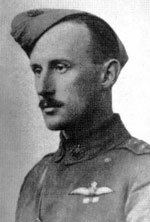Years of service 1916–19191943–1944 Name Patrick Taylor Movies Smithy Battles and wars World War I, World War II | Rank Squadron Leader Role Aviator Books Frigate Bird | |
 | ||
Born 21 October 1896Mosman, Sydney ( 1896-10-21 ) Allegiance United Kingdom Australia Battles/wars First World WarSecond World War Service/branch | ||
Sir Patrick Gordon Taylor, GC, OBE, MC (21 October 1896 – 15 December 1966), known as Gordon Taylor, was an Australian aviator and author. He was born at Mosman, Sydney, and died in Honolulu.

Taylor attended The Armidale School in northern New South Wales. At the beginning of the First World War he applied to join the Australian Flying Corps but was rejected. He subsequently went to Britain and was commissioned into the Royal Flying Corps in 1916, joining No. 66 Squadron. He was awarded the Military Cross in 1917 and promoted to captain, also serving with Nos. 94 and 88 Squadrons.
Following the war he returned to Australia and embarked on a career in civil aviation, working as a private pilot and for de Havilland Aircraft Company in the 1920s. He flew as a captain with Australian National Airways 1930–31. He also completed an engineering course and studied aerial navigation. He served as second pilot or navigator on pioneering flights with Charles Kingsford Smith, Charles Ulm and others. In 1943 he was commissioned flying officer in the Royal Australian Air Force, transferring to Royal Air Force in 1944.
During the 1935 Australia-New Zealand airmail flight with Charles Kingsford Smith, the starboard engine failed and the crew decided to return to Sydney, where the aircraft was buffeted by strong winds. It was decided that fuel and cargo must be jettisoned. During these conditions, Taylor made six journeys outside the cabin of the Southern Cross, climbing along the under-wing strut to drain the oil from the useless motor and transfer this to the overheating port motor. Taylor's actions, with the addition of Smith's flying skills, resulted in the plane making its way back to land safely. Taylor was later awarded the Empire Gallantry Medal for his actions, which was later exchanged for the George Cross. During the Second World War Captain Taylor served as a ferry pilot with the Air Transport Auxiliary (ATA). Taylor was knighted in 1954.
